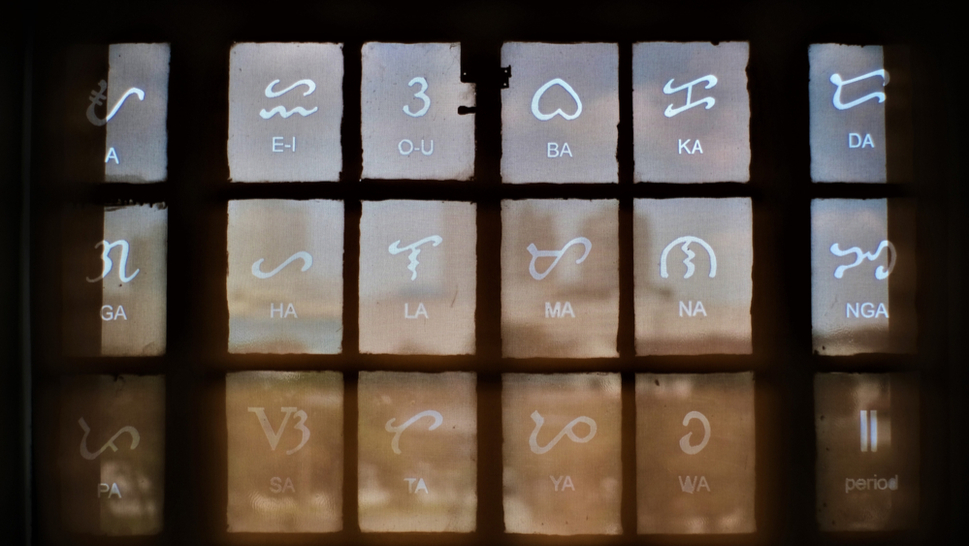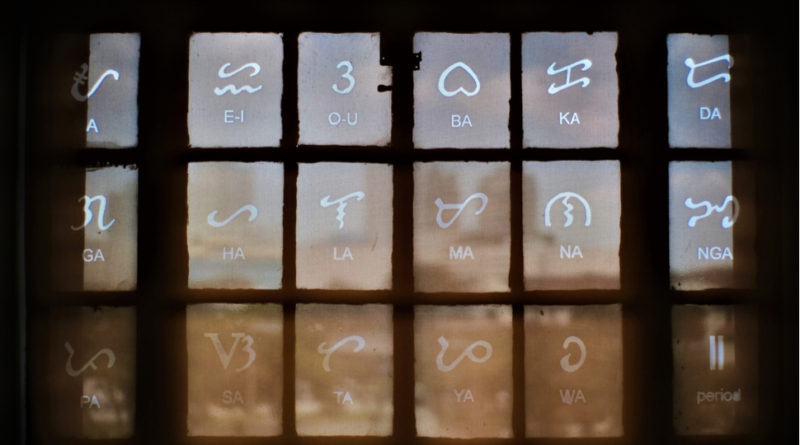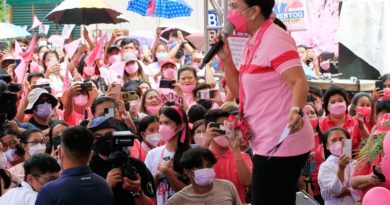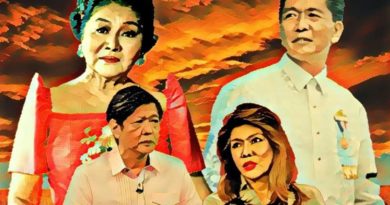Philippines Heritage-History | These Precolonial Filipino Words Recorded by Pigafetta Are Still Used Today
‘Words of those heathen people,’ Pigafetta wrote.

Five hundred years ago, Antonio Pigafetta preserved snapshots of the lives and culture of the precolonial Filipinos. Pigafetta was an Italian scholar and explorer who chronicled the first circumnavigation of the world led by Ferdinand Magellan.
The voyage was so significant because, finally, it proved the world was not flat and suggested that maybe, the Earth wasn’t the center of the universe, after all.
But it also led to other misconceptions: Filipinos are heathens who played a violin with copper strings. At least that’s what Pigafetta wrote.
After the death of Magellan at Mactan, Pigafetta had some time to record the words used by the locals from Cebu. The prolific chronicler also described the island:
In that island are found dogs, cats, rice, millet, panicum, sorgo, ginger, figs (bananas), oranges, lemons, sugarcane, garlic, honey, cocoanuts, nangcas, gourds, flesh of many kinds, palm wine, and gold.
It is a large island, and has a good port with two entrances—one to the west and the other to the east northeast. It lies in x degrees of latitude toward the Arctic Pole, and in a longitude of one hundred and sixty-four degrees from the line of demarcation. Its name is Zubu (Cebu). We heard of Malucho there before the death of the captain-general. Those people play a violin with copper strings.
In his observations, he noted that precolonial Filipinos knew how to count. He also noted that the locals were sophisticated enough to comb their hair (they had a tool for that), and that they had actual words for the different parts of their body.
Interestingly, most of these precolonial Filipino words recorded by Pigafetta are still in use today.
In his book, Primo viaggio intorno al mondo, (First Voyage Around the World), he takes care to record as many Filipino words as he can. Disparagingly, or perhaps because of his Eurocentric sense of superiority, he wrote:
“Vocabuli de questi populi gentili.” Which is loosely translated as, “Words of those heathen people.”
The following are the Visayan words Pigafetta transcribed 500 years ago, most of which are still used today.
for man: lac
for woman: paranpaon
for young woman: beni beni
for married woman: babay
for Hair: boho
for face: guay
for eyelids: pilac
for eyebrows: chilei
for eye: matta
for nose: ilon
for jaws: apin
for lips: olol
for mouth: baba
for teeth: nipin
for gums: leghex
for tongue: dilla
for ears: delengan
for throat: liogh
for neck: tangip
for chin: queilan
for beard: bonghot
for shoulders: bagha
for spine: licud
for breast: dughan
for body: tiam
For armpit: ilot
for arm: botchen
for elbow: sico
for pulse: molanghai
for hand: camat
for the palm of the hand: palan
for finger: dudlo
for fingernail: coco
for navel: pusut
for penis: utin
for testicles: boto
for vagina: billat
for to have communication with women: jiam
for buttocks: samput
for thigh: paha
for knee: tuhud
for shin: bassag bassag
for calf of the leg: bitis
for ankle: bolbol
for heel: tiochid
for sole of the foot: lapa lapa
for gold: balaoan
for silver: pilla
for brass: concach
for iron: butan
for sugarcane: tube
for spoon: gandan
for rice: bughax baras
for honey: deghex
for wax: talho
for salt: acin
for wine: tuba, nio, nipa
for to drink: minuncubil
for to eat: macan
for hog: babui
for goat: candin
for chicken: monoch
for millet: humas
for sorgo: batat
for panicum: dana
for pepper: manissa
for cloves: chianche
for cinnamon: mana
for ginger: luia
for garlic: laxuna
for oranges: acsua
for egg: silog
for cocoanut: lubi
for vinegar: zlucha
for water: tubin
for fire: clayo
for smoke: assu
for to blow: tigban
for balances: tinban
for weight: tahil
for pearl: mutiara
for mother of pearl: tipay
for pipe [a musical instrument]: sub in
for disease of St. Job: alupalan
bring me: palatin comorica
for certain rice cakes: tinapai
good: main
no: tidale
for knife: capol, sundan
for scissors: catle
to shave: chunthinch
for a well-adorned man: pixao
for linen: balandan
for the cloth with which they cover themselves: abaca
for hawk’s bell: coloncolon
for pater nosters of all classes: tacle
for comb: cutlei, missamis
for to comb: monssughud
for shirt: abun
for sewing-needle: daghu
for to sew: mamis
for porcelain: mobuluc
for dog: aian, ydo
for cat: epos
for their scarfs: gapas
for glass beads: balus
come here: marica
for house: ilaga, balai
for timber: tatamue
for the mats on which they sleep: tagichan
for palm-mats: bani
for their leaf cushions: uliman
for Wooden platters: dulan
for their god: Abba
for sun: adlo
for moon: songhot
for star: bolan, bunthun
CONTINUE READING BELOW
for dawn: mene
for morning: uema
for cup: tagha
large: bassal
for bow: bossugh
for arrow: oghon
for shields: calassan
for quilted garments used for fighting: baluti
for their daggers: calix, baladao
for their cutlasses: campilan
for spear: bancan
for like: tuan
for figs [i.e., bananas]: saghin
for gourds: baghin
for the cords of their violins: gotzap
for river: tau
for Fishing-net: pucat, laia
for small boat : ampan
for large canes: cauaghan
for the small ones: bonbon
for their large Boats: balanghai
for their small Boats: boloto
for crabs: cuban
for fish: icam, yssida
for a fish that is all colored panapsapan for another red [fish]: timuan
for a certain other [kind of fish]: pilax
for another [kind of fish]: emaluan
all the same: siama siama
for a slave: bonsul
for gallows: bolle
for ship: benaoa
for a king or captain-general: raia
Numbers
one: uzza
two: dua
three: tolo
four: upat
five: lima
six: onom
seven: pitto
eight: gualu
nine: ciam
ten: polo
Source: Primo viaggio intorno al mondo (1519–1522), by Antonio Pigafetta.
.
TRIVIA
Antonio Pigafetta
|
Antonio Pigafetta
|
|
|---|---|

Statue in Cebu City in the Philippines
|
|
| Born | between 1480 and 1491 |
| Died | c. 1531 (aged around 40–50)
Vicenza, Republic of Venice
|
| Nationality | Venetian |
| Years active | 1500s–20s |
| Known for | Chronicling Magellan’s circumnavigation |
Antonio Pigafetta (Italian: [anˈtɔːnjo piɡaˈfetta]; c. 1491 – c. 1531) was an Venetian scholar and explorer. He joined the expedition to the Spice Islands led by explorer Ferdinand Magellan under the flag of the emperor Charles V and after Magellan’s death in the Philippine Islands, the subsequent voyage around the world. During the expedition, he served as Magellan’s assistant and kept an accurate journal, which later assisted him in translating the Cebuano language. It is the first recorded document concerning the language.
Pigafetta was one of the 18 men who made the complete trip, returning to Spain in 1522, under the command of Juan Sebastián Elcano, out of the approximately 240 who set out three years earlier. These men completed the first circumnavigation of the world. Others mutinied and returned in the first year. Pigafetta’s surviving journal is the source for much of what is known about Magellan and Elcano’s voyage.
At least one warship of the Italian Navy, a destroyer of the Navigatori class, was named after him in 1931.
.
Early life
Pigafetta’s exact year of birth is not known, with estimates ranging between 1480 and 1491. A birth year of 1491 would have made him around 30 years old during Magellan’s expedition, which historians have considered more probable than an age close to 40.[1] Pigafetta belonged to a rich family from the city of Vicenza in northeast Italy. In his youth he studied astronomy, geography and cartography. He then served on board the ships of the Knights of Rhodes at the beginning of the 16th century. Until 1519, he accompanied the papal nuncio, Monsignor Francesco Chieregati, to Spain.[2]
Voyage around the world
Map of Borneo by Pigafetta.
Nao Victoria, Magellan’s boat Replica in Punta Arenas
In Seville, Pigafetta heard of Magellan’s planned expedition and decided to join, accepting the title of supernumerary (that exceeds the number) and a modest salary of 1,000 maravedís.[3] During the voyage, which started in August 1519, Pigafetta collected extensive data concerning the geography, climate, flora, fauna and the native inhabitants of the places that the expedition visited. His meticulous notes proved valuable to future explorers and cartographers, mainly due to his inclusion of nautical and linguistic data, and also to latter-day historians because of its vivid, detailed style. The only other sailor to maintain a journal during the voyage was Francisco Albo, Victoria‘s last pilot, who kept a formal logbook.
Return
Casa Pigafetta, his palace in Vicenza.
Pigafetta was wounded on Mactan in the Philippines, where Magellan was killed in the Battle of Mactan in April 1521. Nevertheless, he recovered and was among the 18 who accompanied Juan Sebastián Elcano on board the Victoria on the return voyage to Spain.
Upon reaching port in Sanlúcar de Barrameda in the modern Province of Cadiz in September 1522, three years after his departure, Pigafetta returned to the Republic of Venice. He related his experiences in the “Report on the First Voyage Around the World” (Italian: Relazione del primo viaggio intorno al mondo), which was composed in Italian and was distributed to European monarchs in handwritten form before it was eventually published by Italian historian Giovanni Battista Ramusio in 1550–59. The account centers on the events in the Mariana Islands and the Philippines, although it included several maps of other areas as well, including the first known use of the word “Pacific Ocean” (Oceano Pacifico) on a map.[3] The original document was not preserved.
However, it was not through Pigafetta’s writings that Europeans first learned of the circumnavigation of the globe. Rather, it was through an account written by a Flanders-based writer Maximilianus Transylvanus, which was published in 1523. Transylvanus had been instructed to interview some of the survivors of the voyage when Magellan’s surviving ship, Victoria, returned to Spain in September 1522 under the command of Juan Sebastian Elcano. After Magellan and Elcano’s voyage, Pigafetta utilized the connections he had made prior to the voyage with the Knights of Rhodes to achieve membership in the order.
The Relazione del primo viaggio intorno al mondo
Antonio Pigafetta also wrote a book, in which a detailed account of the voyage was given. It is quite unclear when it was first published and what language had been used in the first edition. The remaining sources of his voyage were extensively studied by Italian archivist Andrea da Mosto, who wrote a critical study of Pigafetta’s book in 1898 (Il primo viaggio intorno al globo di Antonio Pigafetta e le sue regole sull’arte del navigare[4]) and whose conclusions were later confirmed by J. Dénucé.[5]
Today, three printed books and four manuscripts survive. One of the three books is in French, while the remaining two are in the Italian language. Of the four manuscripts, three are in French (two stored in the Bibliothèque nationale de France and one in Cheltenham), and one in Italian.[5]
From a philological point of view, the French editions seem to derive from an Italian original version, while the remaining Italian editions seem to derive from a French original version. Because of this, it remains quite unclear whether the original version of Pigafetta’s manuscript was in French or Italian, though it was probably in Italian.[5] The most complete manuscript, and the one that is supposed to be more closely related to the original manuscript, is the one found by Carlo Amoretti inside the Biblioteca Ambrosiana, Milan and published in 1800 (Primo viaggio intorno al globo terraqueo, ossia ragguaglio della navigazione alle Indie Orientali per la via d’Occidente fatta dal cavaliere Antonio Pigafetta patrizio vicentino, sulla squadra del capitano Magaglianes negli anni 1519-1522). Unfortunately, Amoretti, in his printed edition, modified many words and sentences whose meaning was uncertain (the original manuscript contained many words in Veneto dialect and some Spanish words). The modified version published by Amoretti was then translated into other languages carrying into them Amoretti’s edits. Andrea da Mosto critically analyzed the original version stored in the Biblioteca Ambrosiana and published this rigorous version of Pigafetta’s book in 1894.[4]
Regarding the French versions of Pigafetta’s book, J. Dénucé extensively studied them and published a critical edition.[6]
At the end of his book, Pigafetta stated that he had given a copy to Charles V. Pigafetta’s close friend, Francesco Chiericati, also stated that he had received a copy and it is thought[by whom?] that the regent of France may have received a copy of the latter. It has been argued that the copy Pigafetta had provided may have been merely a short version or a draft. It was in response to a request, in January 1523, of the Marquis of Mantua that Pigafetta wrote his detailed account of the voyage.[5]
Works[edit]
Antonio Pigafetta wrote at least two books, both of which have survived:
- Relazione del primo viaggio intorno al mondo (1524-1525);
- Regole sull’arte del navigare (1524-1525) (contained in Andrea Da Mosto, ed. (1894). Il primo viaggio intorno al globo di Antonio Pigafetta e le sue regole sull’arte del navigare.).
Exhibition
In June 2019, in the context of the quincentenary of the circumnavigation, an exhibition entitled Pigafetta: cronista de la primera vuelta al mundo Magallanes Elcano opened in Madrid at the library of the Spanish Agency for International Development Cooperation (AECID). AECID was also involved in the publication of a book about the expedition La vuelta al mundo de Magallanes-Elcano : la aventura imposible, 1519-1522 (ISBN 978-84-9091-386-4).[7]

Ads by:
Memento Maxima Digital Marketing
@[email protected]
SPACE RESERVE FOR ADVERTISEMENT



 Memento Maxima Digital Marketing @
Memento Maxima Digital Marketing @










